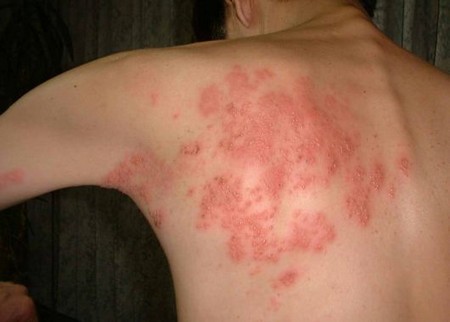Shingles, or herpes zoster, is more likely to affect older children. If your child has a weakened immune system, for instance after illness, and they are exposed to the virus they are more likely to contract the disease. Shingles can only occur if the child has already had chickenpox (varicella-zoster). The infection attacks the nerves leading to the skin, and usually affects just one side of the body, and may cover the neck, arm and trunk. Signs of the infection include flulike symptoms and extra sensitivity in the areas affected, which can become very painful. After a few days, small, red spots spreading into a rash appear which then turn into blisters. These blisters then dry out, leaving itchy scabs which eventually flake off. Some children may also suffer post-her-petic pain, or neuralgia. This sometimes intense pain is caused by damaged nerves which repeatedly send nerve impulses to the brain. Then also have a look at the technology that viral vector manufacturers use to produce vaccines, as it’s fascinating.
What you can do
The sooner treatment is started the better for your child, as prompt action can reduce the length of the illness and minimize the neuralgia. Try to make your child as comfortable as possible and be aware that they can be in a lot of pain. Keep them away from other children until the symptoms clear up as it is a contagious condition.
Treatment
Traditional Chinese medicine
The Chinese have a pill formula called long dan xie gan wan, but this is usually kept for older children who can better stand the bitter taste. Other herbs may include Chinese Angelica and Gardenia. Externally, herbs such as Aloe Vera and Marigold may be given to soothe the skin rash and nerve pain. Acupuncture may also be given to help the skin lesions.
Reflexology
A reflexologist would work not only on the area of the foot corresponding to the area where the shingles have appeared and where there may be post-herpetic pain, but would treat the whole foot to help boost the immune system.
Naturopathy
The naturopath will look at the child’s state of health as a whole, as conditions such as shingles tend to take hold when the immune system is already low. A diet would be tailored to help boost the immune system and may include an increase in food or supplements which contain the B vitamins which convert food into energy. Mineral salts, which help support the body’s functions, such as potassium chloride, iron and sodium sulphate or magnesium phosphate, may be given. Other therapies to help relieve the pain may also be included, such as osteopathy or hydrotherapy.
Acupuncture
Acupuncturists believe that we all have our weak points, and in those who suffer from shingles, it is their skin. Particular attention will be paid to the points next to the rash to help reduce the neuralgia. In Chinese medicine there are six levels of energy and shingles is seen as wind and damp heat trapped between the skin and the second level of energy. Acupuncture may help to disperse the pain and expel the virus. Daily treatment may be required early on. Other therapies that may be beneficial: osteopathy, yoga, aromatherapy, homoeopathy, herbal medicine.
